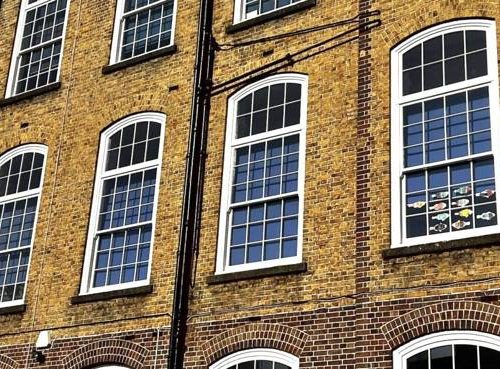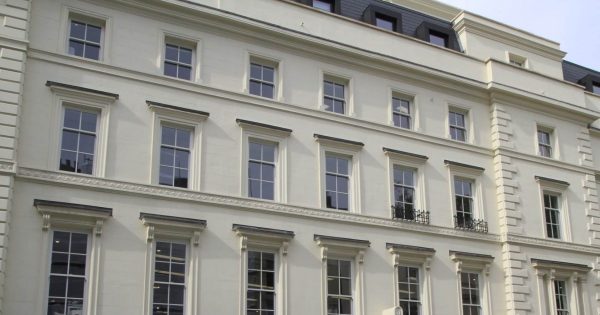Mon Apr 7
Victorian window restoration is a meticulous process that demands a deep understanding of historical construction techniques and a commitment to preserving original features.
This guide provides architects and heritage specialists with the essential knowledge and specifications needed to undertake successful Victorian window restoration projects, balancing historical accuracy with the requirements of modern performance.
Discover how TRC Contracts combines traditional skills with innovative approaches to deliver exceptional restoration outcomes.
What is the best way to approach a Victorian window restoration project?
The best approach involves a thorough assessment of the window’s condition, followed by careful repair or replacement of damaged components using historically appropriate materials and techniques. This ensures the window’s structural integrity, aesthetic appeal, and energy efficiency are preserved.
Understanding Victorian windows
Victorian architecture, spanning the 19th century during Queen Victoria’s reign (1837-1901), saw significant technological advancements in window design and construction. The era marked a shift towards larger panes of glass and more ornate window styles, reflecting the period’s emphasis on aesthetics and grandeur. Box sash windows, characterised by their vertically sliding sashes and concealed weights, became a defining feature of Victorian homes throughout England and the UK.
The importance of authentic Victorian window restoration
Restoring Victorian windows requires more than just repair work; it demands a commitment to preserving their historical authenticity. Original window glass, timber profiles, and decoration all contribute to the unique character of historic buildings. Authentic sash window restoration ensures that these features are retained, maintaining the building’s architectural integrity and historical significance.
Common problems in Victorian windows
Victorian windows are prone to several common problems due to their age and construction. These include:
- Rot: Timber rot, caused by moisture ingress, is a prevalent issue in window frames and sills.
- Draughts: Gaps and cracks in the window frame and sashes can lead to draughts and heat loss, impacting energy efficiency.
- Sash cord failure: Worn or broken sash cords can prevent the sashes from operating smoothly.
- Glazing issues: Cracked or broken window glass, as well as deteriorated glazing putty, can compromise the window’s structural integrity and aesthetic appeal.
- Pulley system: Issues in the pulley system can impact the functionality of the window.
Victorian window restoration: A step-by-step guide
A successful Victorian window restoration project typically involves the following steps:
- Initial assessment: A thorough inspection of the window’s condition, including the window frames, sashes, window glass, sash cords, and decoration. Surveyors often undertake this.
- Timber repair: Repairing or replacing damaged timber components, such as the sill, using like-for-like materials. Sill replacement is a common aspect of this.
- Sash window refurbishment: Refurbishing the sashes, including removing old paint, repairing rot, and re-glazing with historically appropriate window glass.
- Draught proofing: Installing draught seals to eliminate draughts and improve insulation. Addressing draught issues also aids energy efficiency.
- Sash cord replacement: Replacing worn or broken sash cords to ensure smooth window operation.
- Decoration: Repainting or refinishing the window frames and sashes to match the original decoration.
- Re-glazing: Re-glazing the window with single glazing or double glazing.
Glazing options for Victorian windows
Choosing the right glazing is crucial for balancing historical authenticity with modern performance. Options include:
- Single glazing: Maintaining the original appearance of the window with traditional single pane of glass.
- Double glazing: Improving energy efficiency with slim double glazing while minimising visual impact. Double glazing helps with insulation.
- Secondary glazing: Adding an additional layer of glazing to the inside of the window for improved insulation and soundproofing.
Balancing energy efficiency with historical accuracy
One of the key challenges in Victorian window restoration is balancing the need for energy efficiency with the desire to preserve historical accuracy. While modern double glazing can significantly improve insulation, it may not be appropriate for all historic buildings, particularly those in conservation areas. In such cases, secondary glazing or draught proofing may offer a more sympathetic solution.
Building regulations and conservation areas
Victorian window restoration projects must comply with building regulations and conservation area guidelines. These regulations aim to protect the architectural heritage of historic buildings and ensure that any alterations or repairs are carried out in a sensitive and appropriate manner. It’s important to consult with local planning authorities before undertaking any restoration work to ensure compliance.
The role of timber in Victorian windows
Timber is a defining material in Victorian windows, contributing to their aesthetic appeal and structural integrity. When undertaking restoration work, it’s essential to use high-quality, sustainably sourced timber that matches the original material. TRC Contracts specialises in crafting new timber windows and repairing existing timber windows using traditional joinery techniques.
Working with TRC Contracts for Victorian window restoration
At TRC Contracts, we offer a comprehensive range of sash window restoration services tailored to the unique needs of Victorian properties. Our skilled team of craftsmen combines traditional techniques with modern technology to deliver exceptional results. Whether you require sash window refurbishment, sill replacement, or complete window restoration, we have the expertise to handle any project.
Our services include:
- Detailed surveys: Thorough assessments of the window’s condition to identify the extent of the repair work required.
- Bespoke joinery: Crafting new timber windows and components to match the original design.
- Sash window restoration: Repairing and restoring existing sash windows, including sash cords, glazing, and decoration.
- Draught proofing: Installing draught seals to eliminate draughts and improve energy efficiency.
- Compliance with regulations: Ensuring that all restoration work complies with building regulations and conservation area guidelines.
The long run: Ensuring durability and service life
Investing in high-quality Victorian window restoration ensures the durability and extends the service life of your windows. By using appropriate materials and techniques, you can protect your windows from rot, draughts, and other common problems, preserving their beauty and functionality for years to come.
Work with TRC Contracts today
Victorian window restoration is a complex but rewarding process that requires expertise, attention to detail, and a commitment to preserving historical authenticity. By following this expert specification guide and working with a trusted partner like TRC Contracts, you can ensure that your Victorian windows are restored to their former glory, improving the beauty, value, and energy efficiency of your property.
Ready to embark on your Victorian window restoration project? Contact TRC Contracts today to discuss your requirements and discover how we can help you achieve exceptional results. We offer an in-house design service if that’s preferable. We make sure to pay attention to all visual demands of both modern and historic architecture. Unique buildings require unique solutions, which is exactly why we offer a bespoke design and manufacturing service. In addition, our windows and doors have elements of customisability, such as glazing and ironmongery, which make each of our projects unique.





